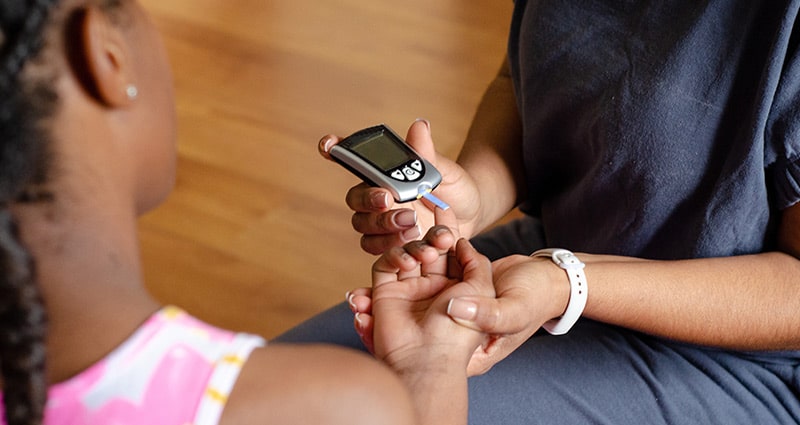With Thanksgiving and Christmas right around the corner, it is important to be aware of the extra food and treats your child will be offered during holiday parties, especially for children with diabetes
Diabetes is a metabolic disease in which the body is unable to produce enough of or properly use its own insulin, a hormone that helps get glucose from the bloodstream into the cells of the body, causing glucose to build up in the blood. In November, we recognize American Diabetes Month and the 15,000 children who are diagnosed each year. Type 1, or juvenile onset diabetes, affects 5 to 10 percent of diabetics, and is usually found in children and young adults. There is no cure for this type of diabetes, but proper treatment can make it manageable. The holidays can be a particularly tricky time for these families, but it’s important for children with diabetes to feel as normal as possible.
Here’s some advice from James Gardner, MD, pediatric endocrinologist with Our Lady of the Lake Children’s Health, on how to manage diabetes and still enjoy the holidays. Children shouldn’t eat candy and other treats all the time, but there are some smart ways to indulge:
1. Count all carbs.
Kids who take insulin should dose their insulin based on their carb intake. The more carbs they eat the more insulin they will give. We always encourage counting all carbs, regardless of the type of carb.
2. Balance the meal.
Even when carb counts are followed, sugary items can still make blood sugars rise. If they combine these treats with a protein and complex carb in a meal, it may help reduce the post-meal spike.
3. Space out the sugar intake.
Instead of eating large amounts at once, space treats out a few hours apart and dose insulin for each instance of carb intake.
4. Pay attention to blood sugar.
For those who do have a post-meal spike, we also have insulin dosing to help correct high blood sugars. About two to three hours after your child’s meal or treat re-check their blood sugar. Give them extra insulin if their levels rise.
5. Try a sugar substitute.
Try baking with various sugar substitutes to lower the amount of sugar in the treats. Sucralose (Splenda), stevia (Truvia) and Erythritol (Swerve) are all good options and taste just like sugar. Visit any of these brands’ websites for more tips and recipes for baking with sugar substitutes.
Also, don’t underestimate the power of physical activity. Encourage your child to get outside and play basketball, kick around a soccer ball, or engage in another form of physical activity before a meal. It can help the body be more sensitive to insulin and help the insulin injections to be more effective. Grab your family and go out back to play some football before chowing down on a Thanksgiving or Christmas feast. You can go outside afterwards, but that infamous post-meal nap may get in the way. If you have any questions regarding your child’s diabetes, call your pediatrician.




